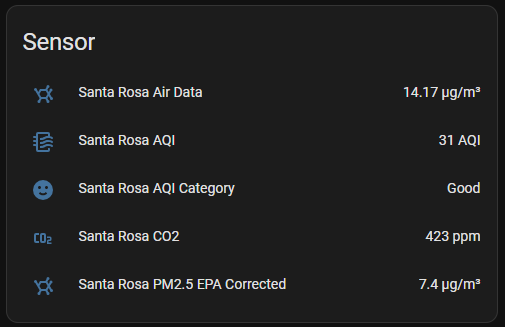TL;DR: The new Open Air Max does NOT support Home Assistant integration. AirGradient confirmed this officially. Looking for community workarounds.
Background
I just received my Open Air Max Outdoor Monitor (O-M-1PPST) and was excited to integrate it with Home Assistant like the regular Open Air and ONE models. Unfortunately, AirGradient support confirmed:
“At the moment, the OA Max does not support Home Assistant - only the AirGradient dashboard. At the moment, we are unsure if HA integration will be added at a later date.”
- Ethan (AirGradient Support)
Potential Workarounds - Need Community Input!
Since the Max has great features (solar, cellular) but no HA support, I’m wondering if anyone has found alternative integration methods:
- AirGradient Cloud API
- Does the Max send data to the same cloud dashboard as other models?
- Could we use the REST API (Swagger UI) with HA’s REST integration?
- Has anyone successfully set up cloud API polling for AirGradient devices?
- Local JSON Endpoint
- Regular Open Air models provide local JSON at
/measures/current - Does the Max have similar local endpoints we could poll?
- Anyone willing to test
http://[max-ip]/measures/current?
- MQTT Integration
- Standard models support MQTT broker configuration
- Does the Max have MQTT capabilities in the dashboard settings?
Community Questions
If you have an Open Air Max, please help test:
- Try accessing
http://[your-max-ip]/measures/current- does it return JSON? - Check if MQTT options exist in your AirGradient dashboard
- Can you see Max data in the cloud API endpoints?
- Has anyone found other workarounds or integration ideas?**
…Posted by someone who definitely didn’t buy the Max without checking HA compatibility first…  …
…

